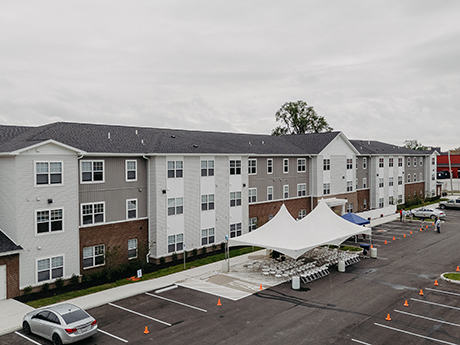Commercial real estate industry leaders are slightly more bullish on the investment prospects for the multifamily sector than they were a year ago, according to the newly released 2026 Emerging Trends in Real Estate forecast conducted by the Urban Land Institute (ULI) and PwC.
Among major property types on a scale of 1 to 5 — where 1 is abysmal and 5 is excellent — multifamily (including single-family rentals) achieved a rating of 3.67, second only to mixed-use/alternative assets, which posted a rating of 3.69. The industrial/distribution sector scored 3.61, followed by retail (3.48), hotels (3.40) and office (3.24).
Heading into 2025, commercial real estate industry leaders scored the investment prospects for multifamily at 3.59, slightly below the industrial/distribution sector at 3.67.
Meanwhile, with housing costs pushing middle-income families into smaller markets and public agencies rolling out new incentives, affordable housing is emerging as investors’ top target for 2026, outpacing conventional market-rate multifamily.
The findings in the annual forecast produced by ULI and PwC are based on input from the industry’s most active investors, developers, lenders and advisors. For the 2026 edition, researchers interviewed and surveyed experts including investors, fund managers, developers, property companies, lenders, brokers, advisers and consultants. More than 500 individuals were interviewed, and survey responses were received from approximately 1,250 individuals.
Doubling Down on Affordable Housing
Investors are likely to back affordable housing and build-to-rent (BTR) projects in the coming year. A closer look at the investment prospects for the subsectors within multifamily reveals that affordable/workforce housing and single-family rentals each received a 3.75 rating. “Potential homebuyers unable to find an affordable home to buy are increasingly turning to single-family rentals for more space,” the report states.
Government bodies at all levels are removing bureaucratic roadblocks and increasing funding for developers so they can build more affordable housing in 2026. The Federal Housing Finance Agency (FHFA) is doubling the investment caps for Fannie Mae and Freddie Mac in low-income housing tax credits (LIHTC) to $2 billion each for the upcoming year, up from the previous $1 billion limit.
In addition to the federal expansion of the LIHTC program, which included a 12 percent increase in 9 percent LIHTC deals, a reduction in bond thresholds for 4 percent LIHTC projects, and additional provisions for Opportunity Zone extensions, nearly two dozen states adopted policies to increase housing development in 2025, according to the National Council of State Housing Agencies (NCSHA).
NCSHA reports that more than 400 pro-housing bills were introduced in state legislatures, and more than 100 were signed into law as of the fall, including in California, which passed legislation to streamline environmental reviews, speed up permitting and approvals and increase financing for affordable housing.
According to the research, affordability has been driving middle-class families out of high-cost-of-living primary metro areas and into markets in the Sun Belt and out West for some time.
But during the COVID and post-COVID years of 2021 and 2022, asking rents increased by 25 percent nationally and even more in some rapidly growing Sun Belt markets. Yardi Matrix reported asking rents in southwest Florida grew by a whopping 38 percent between February 2021 and February 2022.
Sources interviewed for the report said the growing cost of housing in Sun Belt markets is now leading to a wave of migration to more affordable markets. One expert noted housing development growth is occurring in markets where college graduates are finding jobs such as Birmingham, Alabama; the Twin Cities; Raleigh, North Carolina; and Milwaukee.
“A trend we expect in the next few years is that people will be looking for fringe markets that are more affordable,” said a researcher at a multifamily real estate investment trust. “Places like Columbus and Indianapolis are not exciting for investors, but they are driving decisions for households.”
Unrealized Expectations in 2025
Many market leaders who were interviewed for the report concluded that 2025 just wasn’t the year of the market-rate rebound as some had predicted.
Expectations were high that 2025 would mark a transition because dwindling construction starts created optimism that rent growth would pick up. But now, the report states, that slow rental growth will extend into 2026 and possibly longer.
“Everyone thought that 2025 would be the year of recovery; now everyone is hoping that 2026 will be the year for that,” said the chief executive of a national apartment trade group. “Will there be a switch flipped where everything gets back to where it was a few years ago? Probably not. It will be a slow process.”
— Lynn Peisner
Visit Uli.org to read the report.


